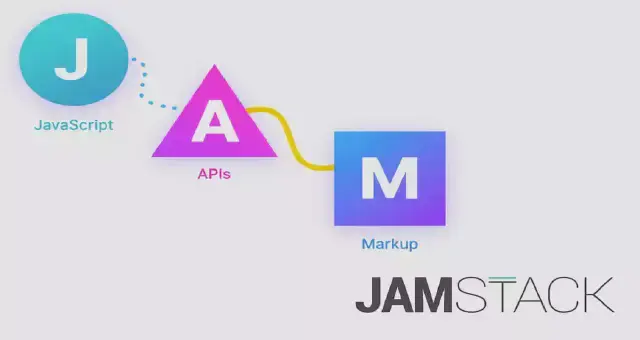The Power of JAMstack: A Comprehensive Guide

meaning of jamstack is stand for JavaScript, APIs and markups first coined by Mathias Biilmann, CEO of Netlify in 2015. In Jamstack websites, the application logic typically resides on the client side, without being tightly coupled to the back end server.
The core principles of this technology is pre-rendering, and decoupling, enable sites and applications to be delivered with greater confidence and resilience than ever before.
With Jamstack, the entire front end is prebuilt into highly optimized static pages and assets during a build process. This process of pre-rendering results in sites which can be served directly from a CDN, reducing the cost, complexity and risk, of dynamic servers as critical infrastructure.
JavaScript Dynamic functionalities are handled by JavaScript. There is no restriction on which framework or library you must use.
APIs Server-side operations are abstracted into reusable APIs and accessed over HTTPS with JavaScript. These can be third-party services or your custom function.
Markup Websites are served as static HTML files. These can be generated from source files, such as Markdown, using a Static Site Generator.
With so many popular tools for generating sites, like Gatsby, Hugo, Jekyll, Eleventy, NextJS, and very many more, many web developers are already familiar with the tools needed to become productive Jamstack developers.
like gxanshu website, this website follow the Jamstack rules the front end of this website is created with JavaScript and the Markup is based on Hugo static site generator.
Why JAMstack
A Jamstack architecture can bring all sorts of benefits to the sites and to project workflows. Some of the key benefits are:
Security
The Jamstack removes multiple moving parts and systems from the hosting infrastructure resulting in fewer servers and systems to harden against attack.
Serving pages and assets as pre-generated files allows read-only hosting reducing attack vectors even further. Meanwhile dynamic tools and services can be provided by vendors with teams dedicated to securing their specific systems and providing high levels of service.
Scale
Popular architectures deal with heavy traffic loads by adding logic to cache popular views and resources. The Jamstack provides this by default. When sites can be served entirely from a CDN there is no complex logic or workflow to determine what assets can be cached and when.
With Jamstack sites everything can be cached in a content delivery network. With simpler deployments, built-in redundancy and incredible load capacity. Performance
Page loading speeds have an impact on user experience and conversion. Jamstack sites remove the need to generate page views on a server at request time by instead generating pages ahead of time during a build.
With all the pages are already available on a CDN close to the user and ready to serve, very high performance is possible without introducing expensive or complex infrastructure.
Maintainability
When hosting complexity is reduced, so are maintenance tasks. A pre-generated site, being served directly from a simple host or directly from a CDN does not need a team of experts to “keep the lights on”.
The work was done during the build, so now the generated site is stable and can be hosted without servers which might require patching, updating and maintain. Portability
